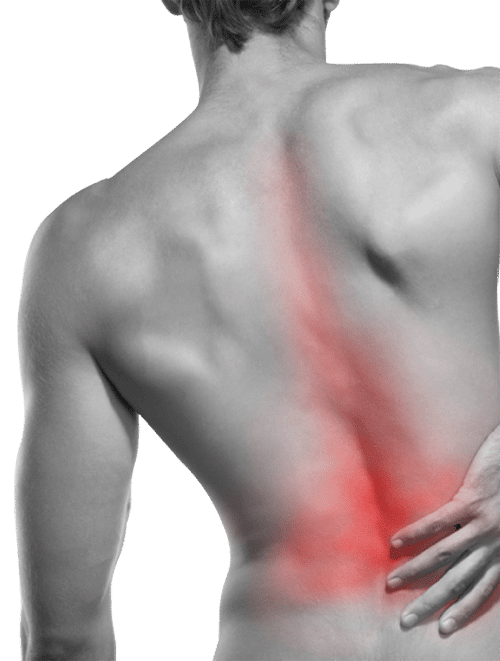If you’re experiencing persistent muscle pain and discomfort, you may be suffering from myofascial pain syndrome (MPS). At New Jersey Back Center, we understand the debilitating impact of MPS on your daily life. Led by board-certified interventional pain specialists, we offer a range of minimally invasive treatments to provide effective relief for myofascial pain. In this guide, we delve into the causes, symptoms, and various treatment options available for myofascial pain, empowering you to make informed decisions about your health.
Understanding Myofascial Pain Syndrome (MPS):
Myofascial pain syndrome is a chronic pain disorder characterized by the presence of trigger points, which are tight, knotted areas in the muscles that are often tender to the touch. These trigger points can cause localized or referred pain, leading to discomfort and limited mobility. MPS can be caused by a variety of factors, including muscle overuse, trauma, poor posture, and stress. It is also associated with conditions like fibromyalgia and multiple sclerosis.
Symptoms of Myofascial Pain
Recognizing the symptoms of MPS is crucial for an accurate diagnosis and effective treatment. Common signs of myofascial pain include localized muscle pain, muscle stiffness, restricted range of motion, and the presence of palpable knots or trigger points. These trigger points can refer pain to other areas of the body, leading to widespread discomfort. If you’re experiencing any of these symptoms, it’s essential to consult with a qualified specialist for an accurate diagnosis and tailored treatment plan.

Diagnostic Approach
At New Jersey Back Center, we prioritize identifying the root cause of your myofascial pain to develop a targeted treatment strategy. Our specialists employ a thorough diagnostic process, which may include a detailed medical history assessment, physical examination, and the use of advanced imaging techniques if necessary. This comprehensive approach enables us to gain a deeper understanding of your condition, ensuring a more effective treatment plan.
Non-Invasive Treatment Options
Myofascial Release
This hands-on technique is a cornerstone of myofascial pain treatment. It involves the skilled application of sustained pressure to the affected muscle areas, targeting specific trigger points. By carefully manipulating the muscles and fascia, myofascial release aims to relieve tension, restore normal muscle function, and promote healing. This therapeutic approach effectively breaks down the tight knots or trigger points within the muscle fibers, reducing their sensitivity and enhancing overall muscle flexibility.
Trigger Point Injections
Trigger point injections offer a precise approach to managing myofascial pain. A qualified healthcare professional administers a local anesthetic or anti-inflammatory medication directly into the trigger points within the affected muscles. By delivering medication directly to the source of pain and muscle tension, trigger point injections provide rapid and targeted pain relief. The local anesthetic numbs the area, reducing pain signals transmitted to the brain, while the anti-inflammatory medication reduces inflammation and swelling around the trigger points.
Physical Therapy
Physical therapy is a fundamental component of myofascial pain treatment, offering a holistic approach to addressing pain and improving overall muscle function. Under the expert guidance of a trained therapist, patients are guided through a tailored exercise and stretching program aimed at releasing trigger points and improving muscle flexibility. Physical therapy not only focuses on treating the immediate symptoms but also addresses the underlying factors contributing to myofascial pain.
Techniques such as transcutaneous electrical nerve stimulation (TENS) may be incorporated to provide pain relief by delivering low-voltage electrical currents to targeted areas, interrupting pain signals and promoting the release of endorphins. Additionally, sound waves therapy may be employed to stimulate healing and improve blood flow to the affected muscles. Myofascial physiotherapy, another effective technique, involves the application of specific manual pressure and stretching to release trigger points, reduce muscle tension, and restore muscle function.
Dry Needling
Dry needling is a specialized technique used in the treatment of myofascial pain, offering targeted relief and muscle restoration. During this procedure, thin needles are inserted directly into the trigger points within the affected muscles. The insertion of these needles stimulates the trigger points, causing a localized twitch response, which helps release muscle tension and promote blood flow to the affected areas. The increased blood flow facilitates the delivery of oxygen and nutrients necessary for healing, while the release of tension allows the muscles to relax and regain their normal function.
Managing Myofascial Pain at Home:
- At-Home Trigger Point Therapy: Self-massage using foam rollers, tennis balls, or specialized tools can help relieve muscle tension and break up trigger points.
- Heat and Cold Therapy: Applying a warm compress or taking a warm bath can help relax tight muscles, while cold packs can reduce inflammation and numb the pain.
- Stress Reduction Techniques: Practicing relaxation techniques such as deep breathing, meditation, and yoga can help alleviate stress, which can contribute to myofascial pain.
Visit Us In New Jersey
Living with myofascial pain can be challenging, but effective treatments are available to help you regain control of your life. At New Jersey Back Center, our board-certified interventional pain specialists are committed to diagnosing and treating the root cause of your pain, providing long-lasting relief through minimally invasive techniques. By seeking the appropriate professional help and exploring self-care strategies, you can take proactive steps towards managing and overcoming myofascial pain syndrome.
Before your first appointment, we offer free insurance verification to ensure a smooth and hassle-free experience. Our conveniently located clinics provide easy accessibility for patients across New Jersey. Our Clifton clinic is situated at 1117 US-46, Suite 205, right off NJ-3, near the Garden State Parkway, and just past the Ford dealership on Route 46-E. The West Orange clinic is located at 445 Pleasant Valley Way, in the same medical office as Twinboro Physical Therapy and Dr. Michael Rieber/Orthopedics Unlimited.
Don’t let pain dictate your life – take the first step toward a pain-free future today.





